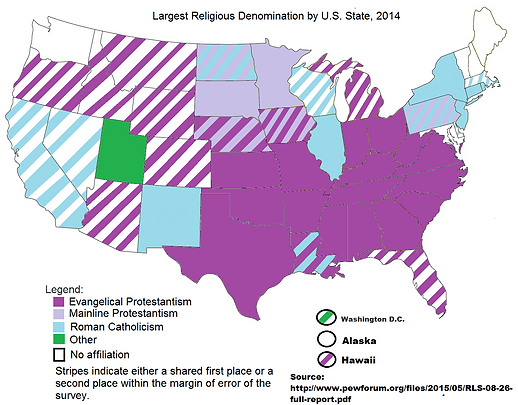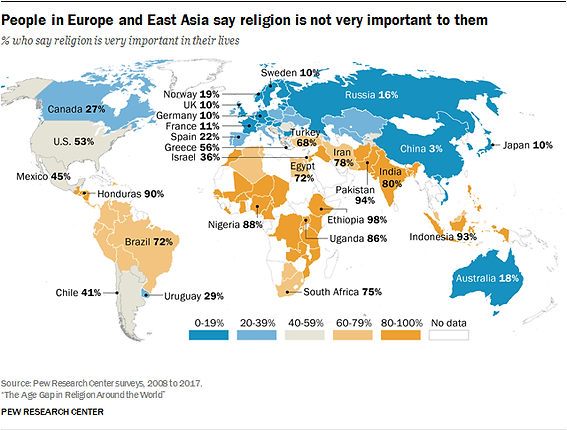COMEDY IN RELIGION
How does comedy manifest itself in a religious context?

The Basics
It's always important to build a base understanding of a subject before diving deep into it. First, we'll cover the basic facts about who practices religion and where. These visual representations of data will help form connections between the amount of people affiliated with religion and what the influence of those beliefs might be on a large scale.
This first graph shows the overall global statistics for religious affiliation, and how those affiliations changed over the span of 15 years. Though the number of non-religious people grew, those who are religious are still in the majority. This means that though religion as a whole has grown less popular in the span of 15 years, those who define themselves as religious still remain in the majority. It is also important to note that Christianity remains the most popular religion in the world.


This figure shows which religious denominations are the most prevalent in each US state. Though there are 18 states that either have no affiliation, or a tie between no affiliation and some affiliation, there is a majority of states that have complete religious affiliation of some kind as the majority. This shows that in the US, religion remains alive and well in a majority of the population.
This map shows the the importance of religion in each country globally, and the large differences there are depending on the region.
In Africa and a majority of Southeast Asia, and Brazil religion is the most important. For the US, Mexico and Chile it is moderately important. And in Canada, Europe, the Northern parts of Asia and Australia it is the least important.


This figure shows religious affiliation in different countries compared to the GDP of that nation. It shows that in most cases, the trend shows that nations with a lower GDP tend to associate more with faith. Most European and some Asian countries with a high GDP are less religious while most African and Middle Eastern nations are more so. Yet, the US is a major outlier as one of the wealthiest nations that has maintained a high percentage of religious affiliation.
With a large part of entertainment produced for global audiences originating in America it is important to know that the majority of people in the US consider themselves religious. This religiosity may have an influence on what is produced by the entertainment industry, as audience is an extremely important part of success in performance arts. And though the US is one of the wealthiest nations in the world, it is different from other developed countries in how it has held onto its faith. Though over time religion might be have decreased slightly in popularity, it still has many strongholds and is deeply rooted into the culture of many societies.